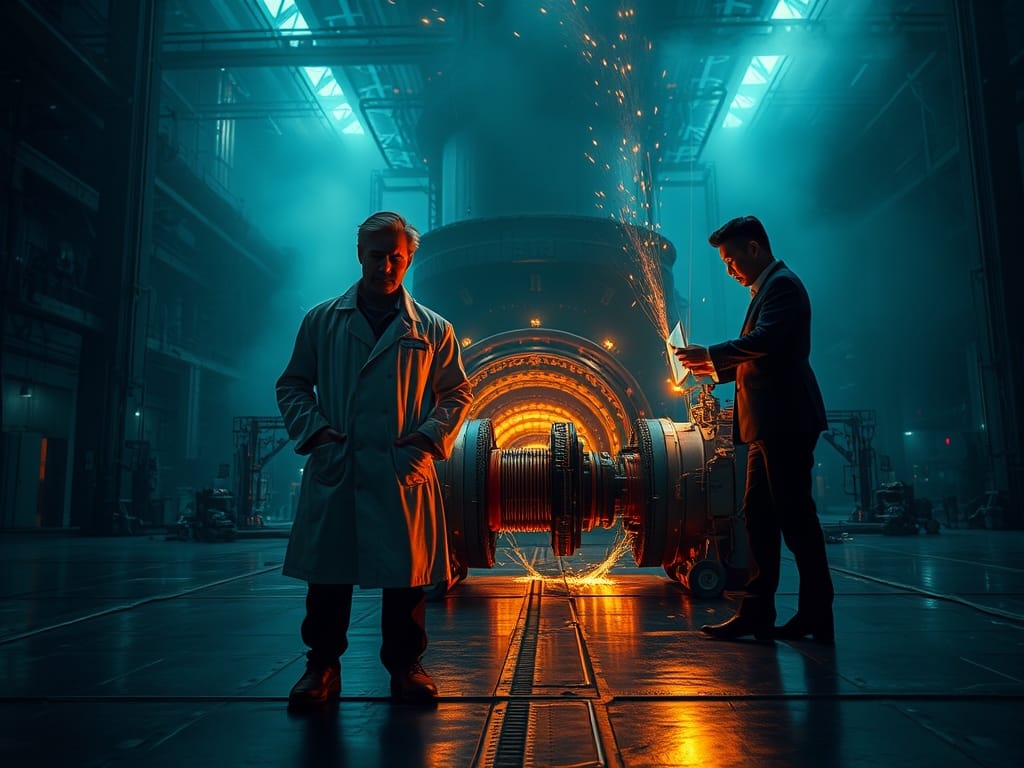How the U.S. Is Losing Ground to China in Nuclear Fusion
Alright, friends, grab your coffee because we need to chat about something that’s heating up in the world of energy: nuclear fusion. Picture this: while the U.S. was once the big kid on the block, China is rapidly catching up, and the competition is heating up faster than a nuclear reaction!
A Race for Clean Energy
So, what’s the deal? China and the U.S. are in a fierce race to create the first grid-scale nuclear fusion energy. If you’ve heard of nuclear fusion, you know it’s often hailed as the holy grail of clean energy. Why? Simply put, fusion can generate four times more energy per kilogram of fuel than traditional nuclear fission—without all the nasty greenhouse gases or radioactive waste. Sounds great, right?
But here’s the catch: actually harnessing this power isn’t simple. According to Dennis Whyte, a professor at MIT, “The only working fusion power plants right now in the universe are stars.” Talk about a tough act to follow!
The Current State of Play
The U.S. made the first big splash in fusion back in 1952 with a hydrogen bomb test. Fast forward to today, and after decades of research, private companies in the U.S. have invested over $8 billion into fusion startups. Yet, up until now, we haven’t quite nailed that sweet spot of producing sustained energy from fusion.
On the flip side, China has grabbed the ball and is running with it. They’re pouring a whopping $1.5 billion a year into fusion research—almost double what the U.S. is spending. Plus, they’re ramping up construction on nuclear projects left and right. Can you say “energy race”?
Who’s Got the Bigger and Better Toys?
The size of your reactor matters—bigger means more efficiency when it comes to heating and confining plasma. And guess what? China is making moves to outsize the U.S. in this department. A new fusion project in Mianyang, China, has a containment dome about twice the size of the U.S. National Ignition Facility. Bigger reactor, bigger potential!
But wait, there’s more! While U.S. fusion projects are mostly upgrading old machines, China is busy building brand-new facilities. It’s like the difference between upgrading an old phone versus getting the latest model—obviously, the new tech is going to attract attention.
The Talent Tug-of-War
It’s not just the money and machinery, though. There’s a serious brain drain happening. U.S. universities are struggling to entice students to work on outdated projects, while many researchers are looking to China, where new projects are attracting fresh talent.
What’s Next?
So, where do we go from here? Some experts are calling for a substantial boost in federal funding—around $10 billion—just to keep pace. The time to act is now because fusion isn’t just about producing energy; whoever masters it will reshape the future, especially with the growing needs for AI power.
Just imagine: if the U.S. doesn’t step up its fusion game, China could lead the charge, turning the tides in global energy leadership.
So stay tuned, because this energy race is just getting started! Want to dive deeper into energy tech? Check out our article on how tech giants are investing in nuclear to fuel their AI ambitions.















